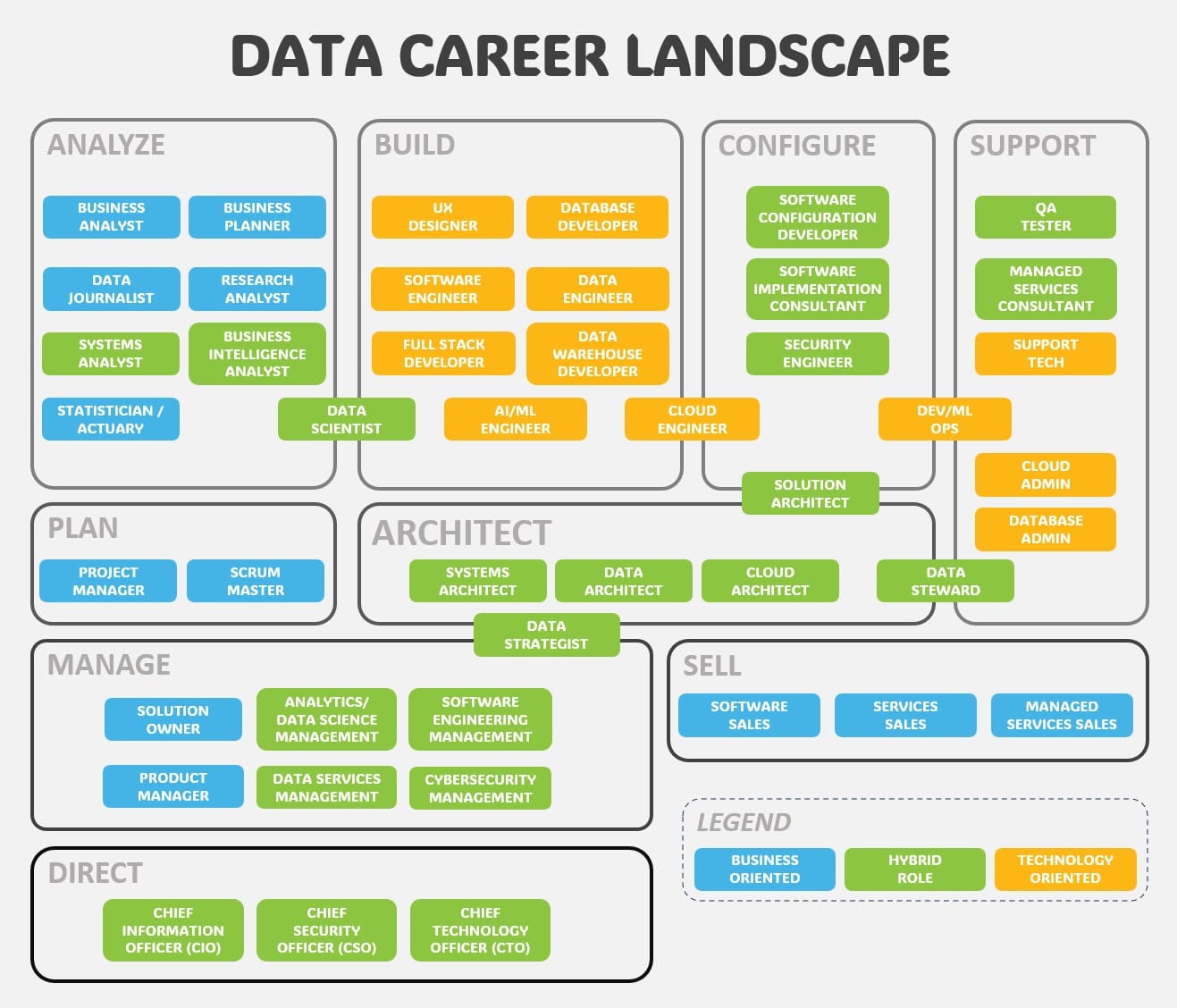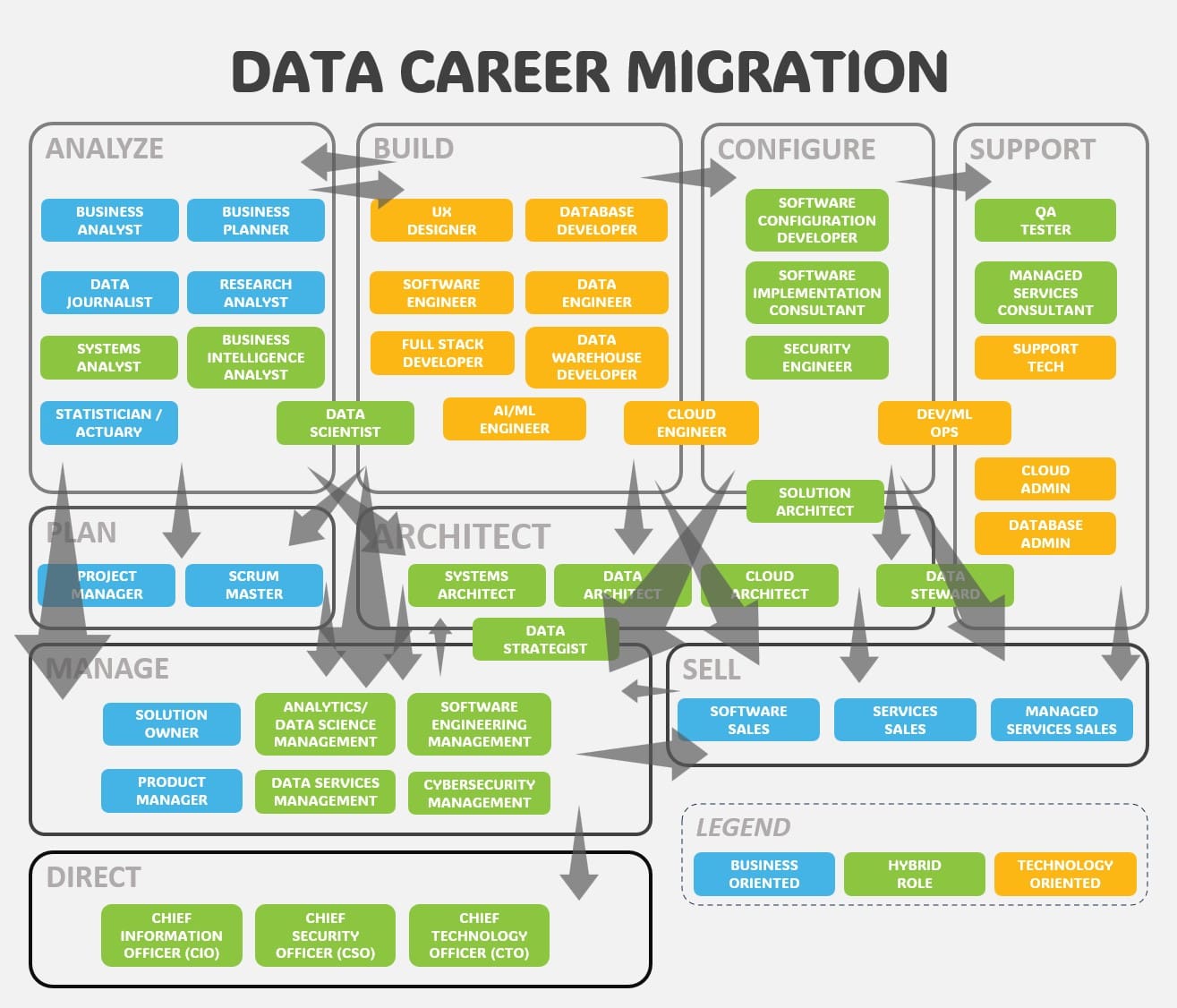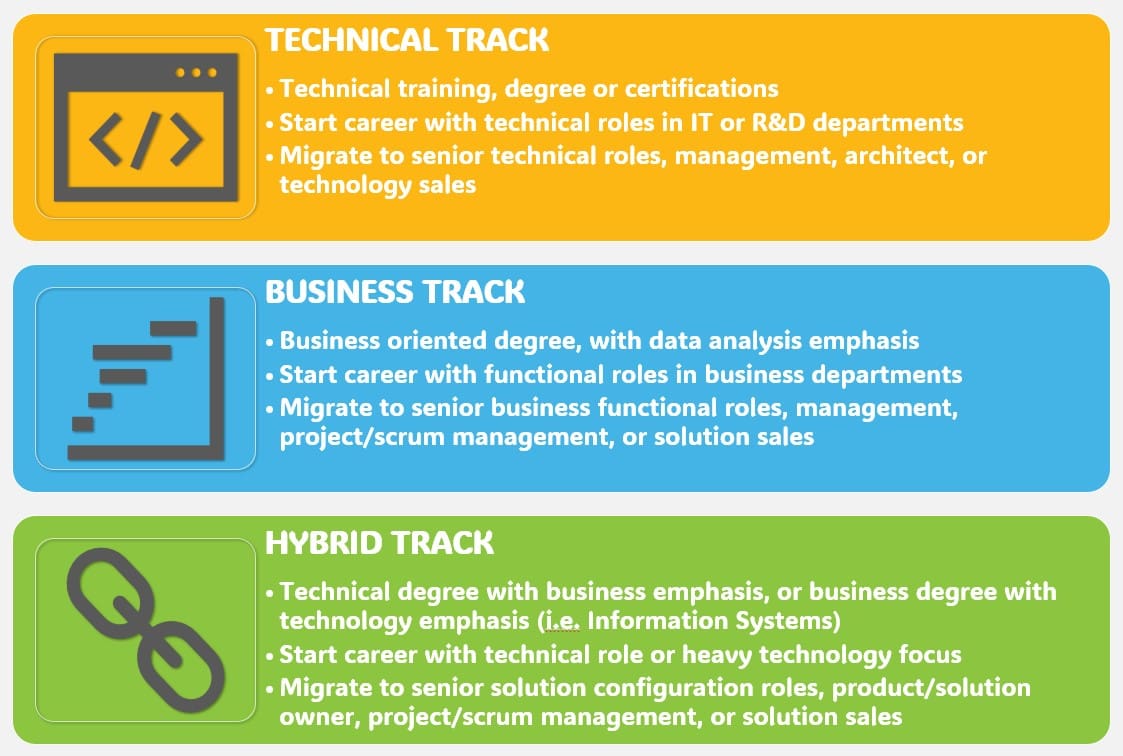Note: This is the second part of a series. Check out part one in Roadmap to Your Career in Data
“Where do you see yourself in 10 years?”
Does that question fill your brain with anxiety or confusion? There are hundreds of variables that could affect our position in the professional landscape, some within our control and others outside of our control. But the better we understand the context and requirements of each role, the better we can begin to plan and seize the right opportunities when they arise.
Professional outlook
The map below shows the data professional landscape, with roles grouped into classes.

Professional Data Landscape
Classes are organized according to similar work activities and deliverables. Individual contributor roles are at the top, with management and executive roles at the bottom. Each feature is then color-coded according to a track, depending on the level of business or technical approach involved. Some classes, such as Analyze, consist of multiple color tracks, while others, such as Sell or Configure, focus on a single color. Roles at the center are related to the coordination and planning of multiple classes. Roles are typically organized with lowest seniority at the top and increasing seniority toward the bottom, but each role can have many levels of seniority in some organization, such as Data Engineer Level 1 through Data Engineer Level 5. And Each of these roles can vary depending on the organization.
As you locate the role you are currently assigned to, you can begin to evaluate its location and neighboring roles. A business analyst, for example, may be creating presentations and using software to collect data. Research analyst and business intelligence (BI) analyst roles fall within the next steps as the analyst gains more business or technical skills. Transitioning to a new role anywhere in the landscape is theoretically possible, but the most common steps will be within one or two steps or in an adjacent class.
The “Configure” job class may not be familiar to many people new to this field. Roles may have names like “Salesforce Developer,” “SAP ABAP Developer,” or “NetSuite Configuration Consultant.” In the enterprise IT world, these roles are common and well-paid. But in university programs these roles are rare. They are often mentioned because they involve specific software packages and are constantly evolving. Platforms like Salesforce allow companies to create new applications with a combination of low-code and full-code environments. This type of work is constantly hiring at consulting companies and consulting groups. supplier implementation.
Many of the most interesting data functions span more than one class. Data Scientist, for example, is a combination of analytics and developer skills. Dev/ML Ops will combine software configuration and support functions. These cross-class roles also tend to be the most sought after and highest paid due to the multiple skills involved. Many people claim to be truly multi-functional unicorns, but not all can perform the wide variety of skills involved.
Professional migration
The following image shows typical migration paths between role classes.


Data Race Migration
These migration routes are where typical career advancement might occur, but they are not intended to be exhaustive. The general pattern of movement is from top to bottom as you gain seniority and may feel burned out by previous roles. It is important to recognize these migration patterns because they may explain why you are not receiving responses to job applications. An experienced project manager, for example, may not get many responses to a job application as a Salesforce developer (software configuration) because it is an uncommon combination. But the transition from a software engineer to a systems architect position will be a natural step and will surprise no one.
A crucial question in migration patterns is: what happens when you reach a Sales, Management or Executive role and decide you want to return? There are few arrows going in the opposite direction. These roles further down the graph tend to have less technical outcomes and can cause skills to atrophy. And the salary is usually lower if you return. Three great options for people who may be tired of Managing or Selling are consulting, teaching, or starting a business. While there may be a shortage of executive positions in large companies, there is an unlimited supply in the next group of startups!
Choose a track
If you're just getting started, check out the roadmap I posted in a previous post. While looking at the roadmap, you can decide what type of track appeals to you the most. A technical track can easily transition to a hybrid track, but an entrepreneurial track is not as easy to do due to the coding skills required.


Choose a career path
Conclusion
Don't worry if you don't know what you want to do in 10 years. Very few of us do. You can focus on assessing where you are in the data career landscape and identifying roles that look attractive for the future. If you don't recognize any of the roles on the map, take some time to learn about them and you might find some interesting ideas. If you see an attractive position that is out of reach, then you can go back to school to make the transition. The good news is that there are a lot of opportunities in the data field and the industry is growing faster every year.
Stan Pugsley is an independent data engineering and analytics consultant based in Salt Lake City, UT. He is also a professor at the University of Utah's Eccles School of Business. He can communicate with the author by email.
 NEWSLETTER
NEWSLETTER





